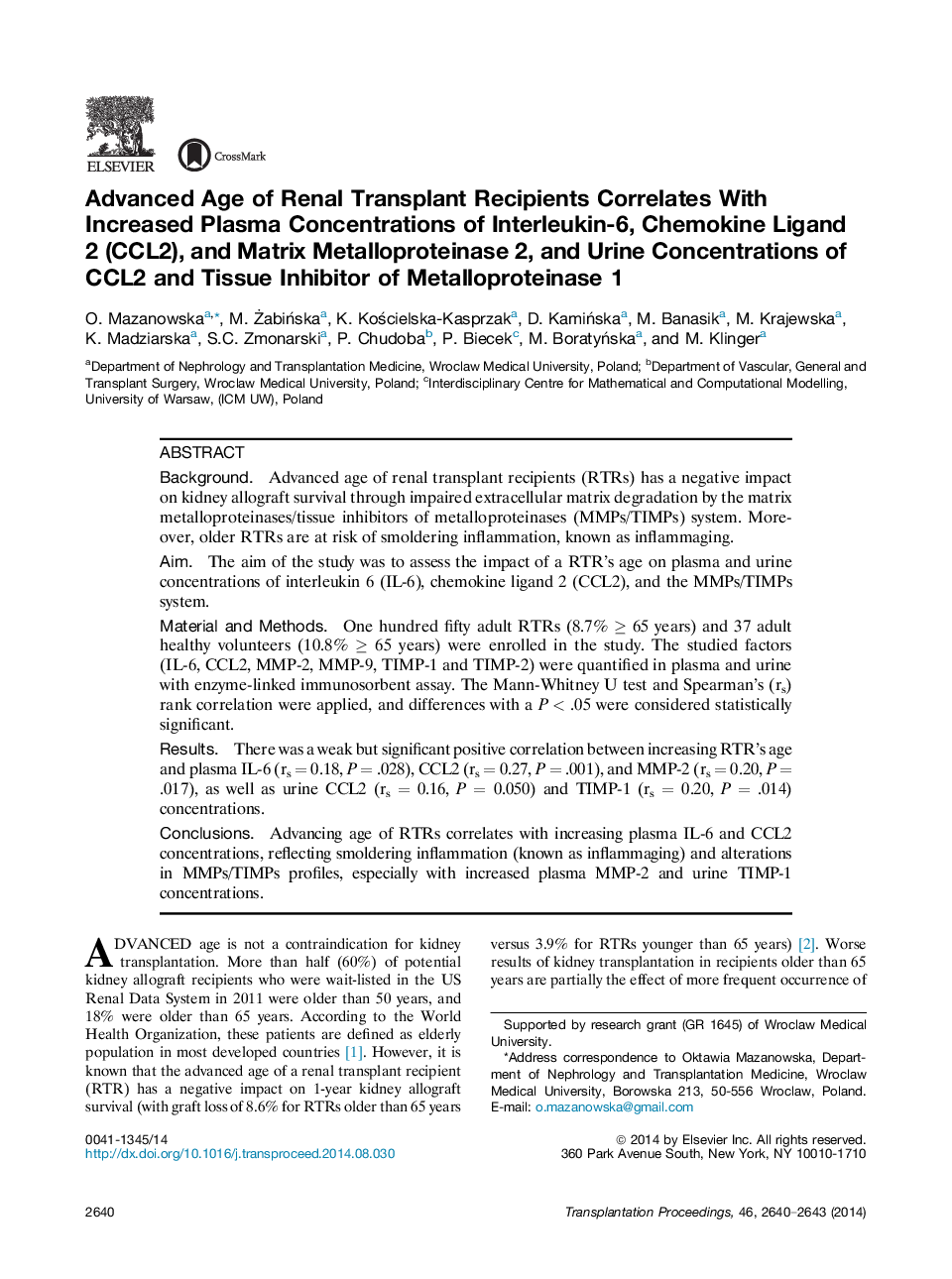| Article ID | Journal | Published Year | Pages | File Type |
|---|---|---|---|---|
| 4257952 | Transplantation Proceedings | 2014 | 4 Pages |
BackgroundAdvanced age of renal transplant recipients (RTRs) has a negative impact on kidney allograft survival through impaired extracellular matrix degradation by the matrix metalloproteinases/tissue inhibitors of metalloproteinases (MMPs/TIMPs) system. Moreover, older RTRs are at risk of smoldering inflammation, known as inflammaging.AimThe aim of the study was to assess the impact of a RTR's age on plasma and urine concentrations of interleukin 6 (IL-6), chemokine ligand 2 (CCL2), and the MMPs/TIMPs system.Material and MethodsOne hundred fifty adult RTRs (8.7% ≥ 65 years) and 37 adult healthy volunteers (10.8% ≥ 65 years) were enrolled in the study. The studied factors (IL-6, CCL2, MMP-2, MMP-9, TIMP-1 and TIMP-2) were quantified in plasma and urine with enzyme-linked immunosorbent assay. The Mann-Whitney U test and Spearman's (rs) rank correlation were applied, and differences with a P < .05 were considered statistically significant.ResultsThere was a weak but significant positive correlation between increasing RTR's age and plasma IL-6 (rs = 0.18, P = .028), CCL2 (rs = 0.27, P = .001), and MMP-2 (rs = 0.20, P = .017), as well as urine CCL2 (rs = 0.16, P = 0.050) and TIMP-1 (rs = 0.20, P = .014) concentrations.ConclusionsAdvancing age of RTRs correlates with increasing plasma IL-6 and CCL2 concentrations, reflecting smoldering inflammation (known as inflammaging) and alterations in MMPs/TIMPs profiles, especially with increased plasma MMP-2 and urine TIMP-1 concentrations.
